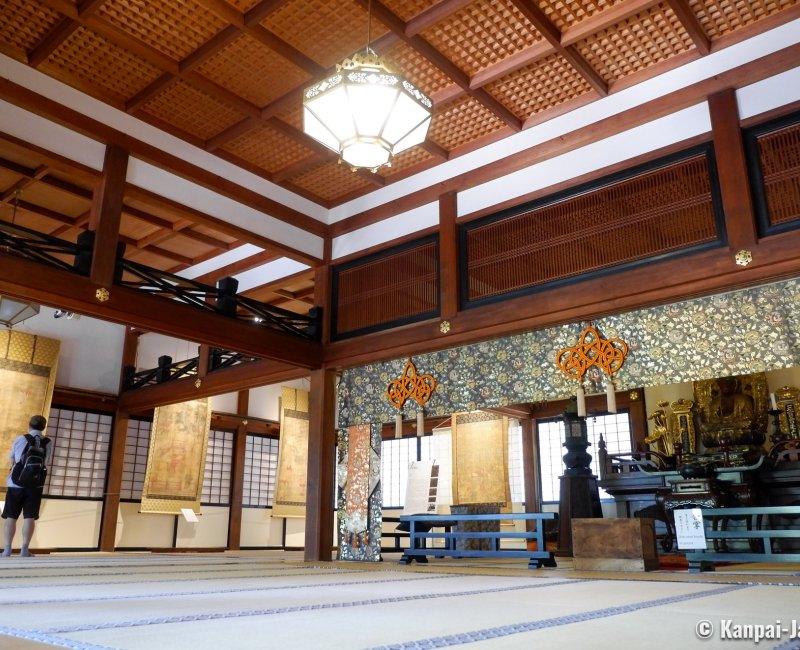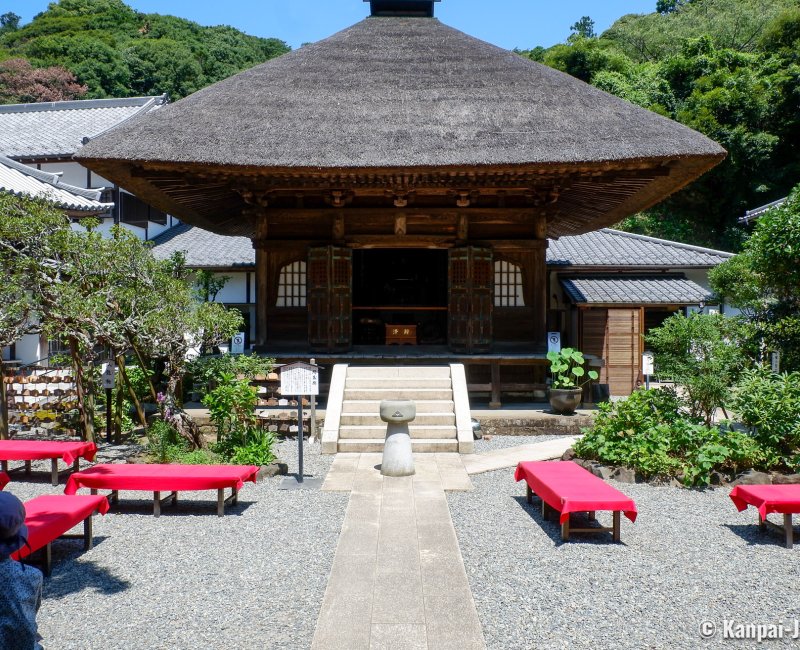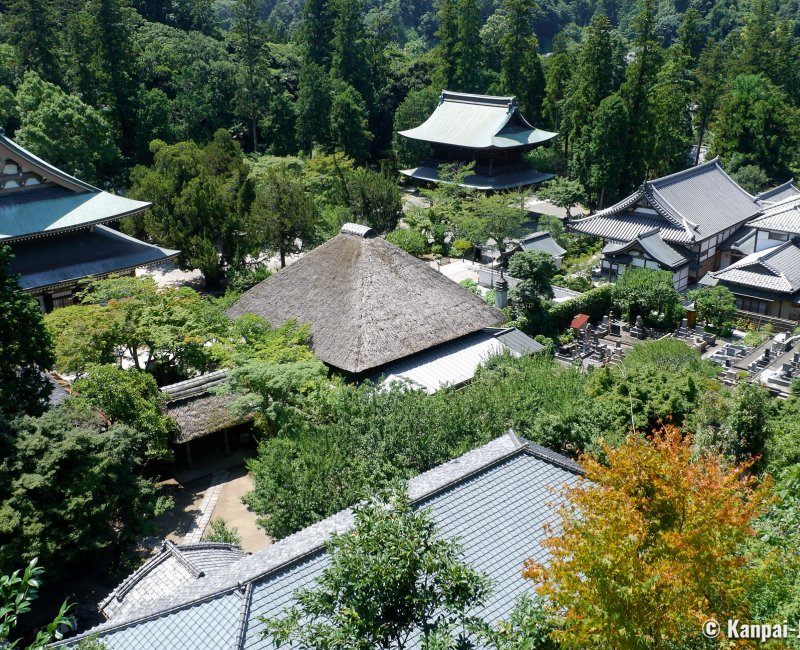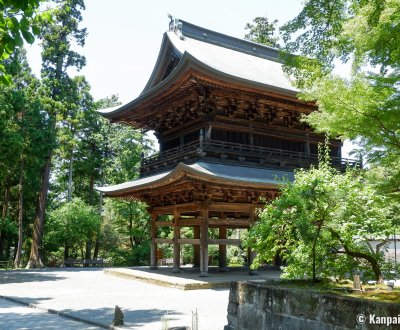Engaku-ji
The Great Zen Spirit Temple in Kamakura
Engaku-ji is one of the most important Zen temples in Japan, located to the north of Kamakura, in Kanagawa prefecture. At the foot of green hills, its grounds shelters several majestic pavilions, some of which designated important cultural properties, spreading on the mountainside.
Engaku-ji was founded in 1282 thanks to two prominent figures:
- Hojo Tokimune (1251 - 1284), the 8th shikken regent of Kamakura’s military government, and thereby the ruler of Japan at the times. He is mainly renowned for the successful repelling of 1274 and 1281 Mongol invasions; and,
- Mugaku Sogen (1226 - 1286), a China-born Buddhist monk who was invited by Tokimune in the midst of the war against the Mongols. He was first appointed head priest of the Kencho-ji.
Place of eternal rest and Zen meditation
The temple was first erected to pay respect to the souls of the many fighters who died on the battlefield, either Japanese or Mongols. After various periods of decline and accidental destructions, Engaku-ji temple is reinvigorated at the end of the Edo period (1603 – 1868) by monk and poet Seisetsu Shucho (1745 – 1820) who started a large scale renovation.
During the Meiji Era (1868 – 1912), Zen masters of the Rinzai School, Imakita Kosen (1816 - 1892) then Shaku Soyen (1860 – 1919), encouraged the bozu Buddhist priests to retreat at the Engaku-ji temple, that consequently became Kanto’s main Zen meditation center. It is now still living up to its reputation, with frequent stagings of Zen sessions and courses, that earned it the nickname of "temple of spirit".

A succession of remarkable pavilions
About a hundred meters away from Kita-Kamakura station’s exit, stands the first Somon gate that discreetly marks the entrance of the temple. One must reach the second and impressive 2-story Sanmon gate to realize how important the place is. The carved wood gate, rebuilt in 1785, is ornamented by a frame engraved with the temple’s name "Engaku Kosho Zenji" from a calligraphy by emperor Fushimi (1265 – 1317). Its upper floor shelters a statue of an 11-face Kannon statue surrounded by 16 arhats.
On the Sanmon Gate’s left side, one can see the Senbutsu-jo hall, an ancient meditation dojo for the monks that is still used nowadays for various rituals. At the center of the esplanade, the main hall called Butsuden cannot be missed with its still impressive size, it dates back to 1964. Take off your shoes to enter this building dedicated to the Buddha Hokan Shaka Nyorai, whose wooden image is viewable inside. The ceiling is also ornamented with the wonderful painting of a white dragon made by Japanese artist Tadashi Moriya (1912 – 2003).
The visit continues at the Daihojo, another impressive pavilion that was initially the head priest’s residence. It is now used for various religious ceremonies, meditation sessions or as exhibition room for the temple’s treasures, in an event staged each year in autumn during the koyo 🍁 period. It is possible to visit the main rooms, with a view on an inner small garden and the Myoko-chi pond.
Further in the temple’s grounds, one can admire from the exterior other Important Cultural Properties, such as:
- Shariden, a sacred, beautiful raw wood building, supposedly preserving a tooth of Buddha; or,
- Kaikibyo, a thatched-roof pavilion, mausoleum dedicated to the founder Hojo Tokimune, rebuilt in 1811.

A physical and spiritual ascension
We highly recommend climbing the stairs surrounding the main esplanade and winding through the hills, to get away from the monks daily life and find some sort of solitude amidst the flourishing nature. A large cemetery spreads on the northwestern side of the temple and offers a beautiful elevated viewpoint on the roofs of the Buddhist pavilions, and further, on the city of Kamakura.
On the opposite side on the south-east, a tall stairway allows access to the small Benten-do temple dedicated to the goddess Benzaiten, one of the 7 Lucky Gods closely linked to Enoshima Island, nearby on the Shonan seaside. Next to it is the big Ogane bell that was cast in 1301 to the request of Hojo Sadatoki (1271 – 1311), the 9th regent of the Kamakura shogunate, to pray for peace and harmony in the world.

Engaku-ji temple is a must-see when visiting Kamakura, thanks to its large grounds spreading on the side of the mountain and its Zen pavilions harmoniously settled in this hilly place. Cinema lovers will also be pleased to visit the tomb of Japanese film-maker Ozu Yasujiro (1903 – 1963), marked by a stela engraved with the ideogram 無 mu, meaning the "nothingness" of the Zen philosophy.

